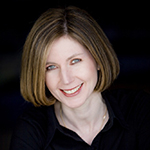
As we move ever closer to our opening event in this our second full season of the ADO, I have been reflecting on what it is that makes the ADO a unique orchestral experience – certainly in Australia and, quite possibly, the world.
There is no question that orchestra organizations in Europe, the U.K., have noticed what we are doing and have responded enthusiastically to our activities and future plans. I’ll have more to say about this sometime in the next month.
On the banner of our ADO Briefing ® newsletter which we curate weekly, the subtitle is The Australian Discovery Orchestra – When We Play, The World Listens. This is both a fact: when the orchestra performs our online audience is listening from all around the world, but it is also a statement of aspiration and long-term intent.
If indeed we can continue to broaden our online audience capture then we, as an innovation-led orchestra organization, are successfully demonstrating the remarkable talents of the musicians on our roster and, simultaneously, showing to the world what fantastic Australian music sounds like!
The other reality is that our concerts are designed to be heard ‘live’ in real-time both in Australia and across the U.S. in ‘friendly’ timezones. One of the reasons that we do concerts at 11:00 am on Sunday mornings is that this is 6:00 pm Saturday evening on the West Coast of America, or 8:00 pm Central and 9:00 pm EST. Conversely, our concerts are at a terrible time for our European subscribers being somewhere between, Midnight and 2:00 am (9- 11 hours behind us).
Fortunately, with our ability to do Pay-Per-View on-demand now, this allows our European and U.K. audience to catch-up on our events at a later time at their convenience. Curiously, we’ve found that Sunday viewing around lunchtime in Europe is extremely popular! Some audience subscribers have delighted to tell us that they watch from their bedrooms settling in to watch the ADO with drink in hand (and, no, we don’t ask what happens afterwards).
As most of our musicians on the ADO roster have now come to realize, the ADO is actually not in the business of being an orchestra that simply performs concerts. With the exception of ensuring that 25% of our playing or recording time is given over to the presentation of music by Australian composers (in this current season it is the music of the young, and vastly talented, Lisa Cheney who will undoubtedly become one of the leading voices of Australian contemporary classical music) the ADO asserts no fundamentalist preoccupations with any period or style of music.
The reason we don’t ascribe to this philosophy is that it limits our capacity to develop incisive storytelling ideas – and to then tell these stories – if we are constrained to use only music from certain years of composition or by a select few recognizably named composers. In fact this period approach to programming is really anathema to the future of Classical Music in our view.
In reality an orchestra cannot, as the saying goes, be “all things to all people.” Of course, we continue to need orchestras that play the canonic works from the repertoire; we need specialist chamber ensembles to bring the diversely interesting chamber orchestra repertoire to the fore, and, we really need fantastic contemporary modern music ensembles to expand our sonic listening capacities.
But what all these ensembles conjointly need is the time and means to re-imagine audience engagement design paradigms to capture the hearts and minds of people to bring them to these various music experiences. To do that they will have to embrace narrative forms that make clever, creative, use of the Internet-of-Things alongside their live-mode performance offerings. The willingness to embrace a digital strategy as a business imperative can no longer be avoided.

Our human capacity to tell utterly captivating stories primarily using music as the means of expression requires only one musician with one instrument (or a single musician who sings). It is equally true with just one actor on stage in the hands of a masterful thespian – an experience that will leave you breathless once experienced.
With 68, or more, orchestral musicians gathered together, this capacity to invoke storytelling on a much larger scale should be jaw-droppingly awe-inspiring on every occasion. So why doesn’t this automatically happen?
Our reasoning is this: we don’t work hard enough to make connections from the music to the human experience, preferring to rely on the music exerting a visceral, or instinctive, response on the audience. This thinking belongs to the old belief of ‘conductor as magician’. It’s not true, and never was, irrespective of who is standing on the podium.
Audiences today need to be guided (or shepherded) to avert being overwhelmed by the sheer force and mental weight of the orchestral experience. The truth is that people generally care about and will instinctively love ‘classical’ music, but we do need to hold the hands – and especially so – for the inexperienced concertgoer.
To do this, we need to show the ‘connections’ to their (our audience’s) lives before we present the music, during the presentation itself, and post-concert as well. When we do this, audiences; through these carefully designed experiences, are able to catalogue and sort memories of the orchestral experience thereby allowing them to ‘join the dots’ together. It is this ‘joining of the dots’ which empowers audiences to take ownership of classical music. Once they acquire this expert-mode level of engagement there is no stopping their enthusiasm for the art form.
At the ADO this is what we do – and will continue to strive to further develop.
See you on May 7 for the ‘ADO Arts Learning Festival Orchestra’ concert as part of the ISV Arts Learning Festival (May 3-7) and then for our Season Opening Concert on June 4, live-streamed from Melbourne.
Janine.
